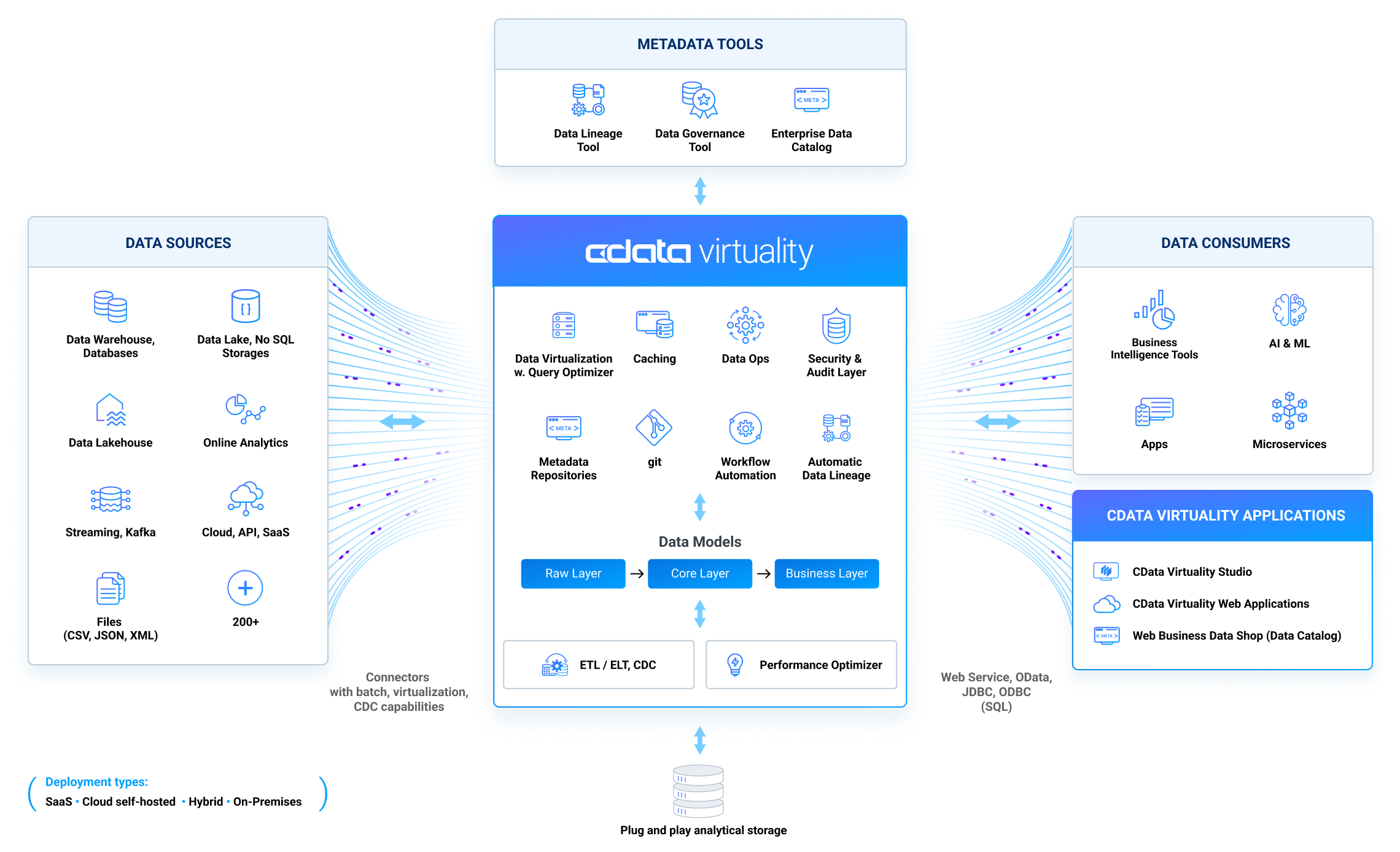Model Context Protocol (MCP) finally gives AI models a way to access the business data needed to make them really useful at work. CData MCP Servers have the depth and performance to make sure AI has access to all of the answers.
Try them now for free →Data Fabric
Data fabric enabled by CData Virtuality
Effortlessly enable essential, flexible, and reusable end-to-end integration needed for your data fabric with CData Virtuality.
- Unified data access: Get a consolidated, consistent view of all data across your tech stack.
- Enhanced agility: Support business growth and data architecture modernization with flexible data access solutions.
- Improved data management: Streamline data governance, security, and compliance with centralized control and monitoring.
Enterprise semantic layer
CData Virtuality is an enterprise-grade independent semantic layer that delivers the data integration and management capabilities essential for powering your data fabric initiatives.
Explore CData VirtualityHow CData Virtuality works

Benefits of data fabric enabled by CData Virtuality
Faster time to integrated data delivery
All data sources, whether in private or public cloud or on-premises, can be easily integrated with CData Virtuality. AI-based recommendation engines analyze the data usage patterns for optimized management processes — which leads to faster time to results.
Managing heterogeneity
CData Virtuality facilitates cloud migration and the exchange of data between different storage systems in a hybrid- or multi-cloud environment. Intelligent connectors support complex processes and optimize extract and load jobs of the data — even for large data volumes.
Metadata catalog
CData Virtuality metadata capabilities make data searchable and downloadable to all business users, depending on their permissions. All data consumers in your organization can access explore their data and metadata in a web browser, where and when they need it.
Data governance, data protection and security
CData Virtuality ensures a high level of security, including a fine-granular permission layer (schema, table, column-, and row-level), a built-in user/role-based permission system, and versioning for all custom metadata.

